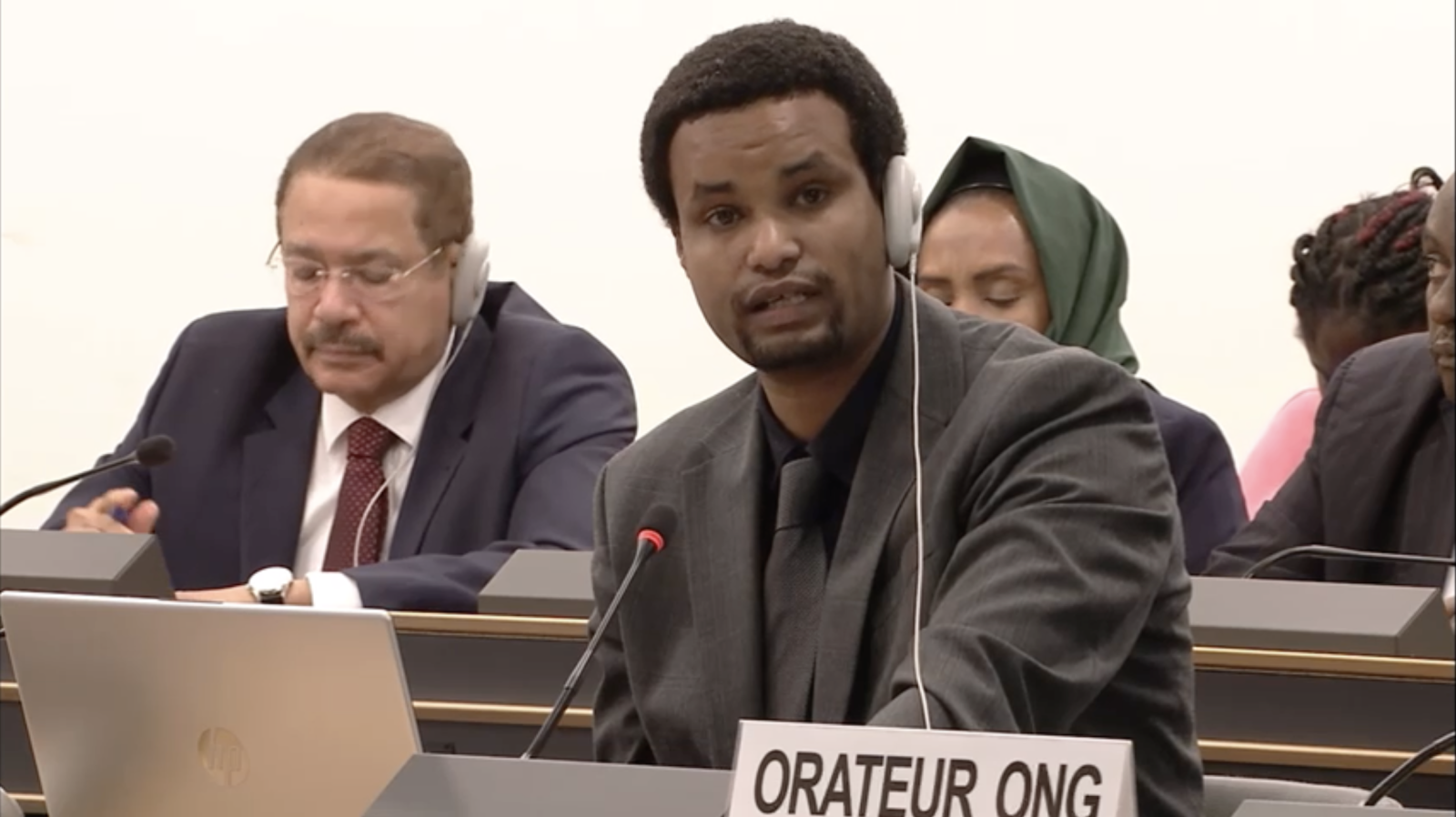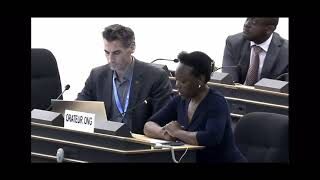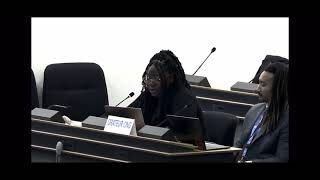International Day of the Victims of Enforced Disappearances - 30 August

By Minna Adlan / GICJ
“Where are they now?” This is the haunting question that continues to echo across continents, spoken by families who lost their loved ones to enforced disappearances. Each year, on the 30 August, the world observes the International Day of the Victims of Enforced Disappearances, a day which has been established by the United Nations General Assembly in resolution 65/209 back on December 21st, 2010. This day serves as a reminder of the countless individuals who vanish at the hands of state authorities or affiliated groups, and of the families left behind caught in the cycle between grief and uncertainty, suffering in anguish.
What is enforced disappearance?
According to Article 2 of the International Convention for the Protection of All Persons from Enforced Disappearance, enforced disappearance is defined as “the arrest, detention, abduction or any other form of deprivation of liberty by agents of the State or by persons or groups of persons acting with the authorization, support or acquiescence of the State, followed by a refusal to acknowledge the deprivation of liberty or by concealment of the fate or whereabouts of the disappeared person, which place such a person outside the protection of the law.”
This practice is not merely a tragic event, but a crime under international law. It violates fundamental essential rights, which include, but are not limited to, the right to liberty, the right to recognition as a person before the law, and the right to be free from torture. Therefore, the international day calls upon governments, institutions, and communities globally to reaffirm their commitment to truth, justice, as well as reparations for victims.
Relevance of this Day
Enforced disappearance is not confined to a single region or historical moment but rather is a global crime that has persisted across decades and continents. From military dictatorships to ongoing armed conflicts, governments and armed groups alike have utilised disappearances as a deliberate method to silence dissent, instil fear, and eliminate perceived threats or opposition.
Today, the practice continues in multiple contexts. In Sri Lanka, enforced disappearances dating back to the civil war remain unresolved, with families still searching for answers decades later. Across South Asia, activists, journalists, and minorities face abductions carried out under the guise of national security, and in several parts of Africa, ongoing conflicts have given rise to widespread disappearances that have devastated communities and obstructed peace efforts. Even in “peaceful” countries, enforced disappearances have been used to target migrants, human rights defenders, and marginalised groups.
In 2025, more troubling reports continued to emerge from the US, highlighting how a lack of systemic transparency and state action can risk classifying enforced disappearances under international law. The removal of over 200 Venezuelan migrants, many of whom had pending asylum claims, from the US and were transferred to conditions in El Salvador, where their current fate and location remain unknown. Many human rights advocates continue to file urgent reports with the UN Working Group on Enforced or Involuntary Disappearances. Even in countries with perceived “strong rule of law” traditions, the problem still persists, and also reveals another layer where collaborations, as well as covert transfers, may only enable more violations with impunity.
The universality emphasises why the International Day is vital, because it is not simply about remembering past atrocities, but about addressing an ongoing crime that continues to rob individuals of their rights and families of truth and accountability. The day serves as a reminder that enforced disappearance is not just another distant tragedy, but a present and urgent issue that demands justice and prevention everywhere.
Case Study: Mexico’s Crisis of Disappearances
The tragedy of enforced disappearances in Mexico remains a longstanding struggle where the issue has reached catastrophic proportions. As of 2025, official registries record over 114,000 people “disappeared” or are missing, and many of them are victims of enforced disappearance. The victims include human rights defenders, journalists, migrants, women, and young people caught in the midst of organised crime and state collusion. Families of the disappeared are often activists themselves, forming search collectives, leading forensic efforts, as well as challenging systematic impunity. The case of the 43 disappeared students of Ayotzinapa (2014) remains remembered. Despite the tears of domestic and international pressure, full truth and accountability are still elusive, showcasing the broader desperation in addressing enforced disappearances across Mexico. The situation highlights the need for genuine state commitment towards uncovering the truth, ensuring justice, and, very importantly, preventing recurrence.
UN Action Against Enforced Disappearances
The UN has consistently advanced initiatives to combat enforced disappearances through legal frameworks such as the 2006 International Convention on Enforced Disappearances, which criminalised the act and obliged states to investigate, prosecute, and prevent it. Over 70 states have ratified the convention; nevertheless, universal adherence remains a key challenge. The UN also established the Working Group on Enforced or Involuntary Disappearances (WGEID) in 1980, which assists families in clarifying the fate of disappeared persons by transmitting cases to governments. As of 2024, over 59,000 cases remained outstanding. The Committee on Enforced Disappearances (CED) also aids with monitoring state compliance with the convention, as well as offering recommendations and supporting victims who want to seek redress. Special procedures with the Human Rights Council and Universal Periodic Review Processes also continue to shed light on cases and urge accountability and transparency. However, despite those efforts, there remains an implementation gap, where states often withhold cooperation, deny responsibility, or fail to criminalise enforced disappearances domestically.
The Role of Civil Society and Families
Civil society organisations, especially those led by families of victims, continue to remain at the forefront of this struggle. The voices from the Mothers of the Plaza de Mayo in Argentina to the emerging family-led movements in Syria and beyond, their resilience demonstrate the power of grassroots advocacy. Their message is clear as they continue to demand truth, accountability, and reparations.
Geneva International Centre for Justice (GICJ) strongly condemns the ongoing practice of enforced disappearances worldwide. We reaffirm that enforced disappearance constitutes a grave violation of international law, and in some circumstances, amounts to a crime against humanity. GICJ urges all states to:
- Ratify and fully implement the International Convention for the Protection of All Persons from Enforced Disappearance.
- Criminalise enforced disappearance in national legislation and ensure independent investigations.
- Provide full cooperation to international mechanisms, including CED and WGEID.
- Ensure the protection and participation of victims' families.
- Guarantee reparations and psychosocial support for survivors and affected families.
Finally, GICJ calls on the international community to increase pressure on states that continue to employ enforced disappearance as a tool of governance or conflict. The voices of victims and their families cannot be silenced.
Sources:
United Nations. Victims of enforced disappearance – International Day. United Nations: https://www.un.org/en/observances/victims-enforced-disappearance
Refugee Rights. Written submission to the IACHR Rapporteurship on Human Mobility: https://refugeerights.org/news-resources/written-submission-to-the-iachr-rapporteurship-on-human-mobility
Office of the United Nations High Commissioner for Human Rights. Working Group on Enforced or Involuntary Disappearances: https://www.ohchr.org/en/special-procedures/wg-disappearances
Office of the United Nations High Commissioner for Human Rights. International Convention for the Protection of All Persons from Enforced Disappearance: https://www.ohchr.org/en/instruments-mechanisms/instruments/international-convention-protection-all-persons-enforced
Al Jazeera. (2025, March 16). US deports over 200 Venezuelan immigrants to El Salvador despite court ban: https://www.aljazeera.com/news/2025/3/16/venezuelan-immigrants-deported-to-el-salvador-despite-us-court-ban
Forensic Architecture. The enforced disappearance of the Ayotzinapa students: https://forensic-architecture.org/investigation/the-enforced-disappearance-of-the-ayotzinapa-students







